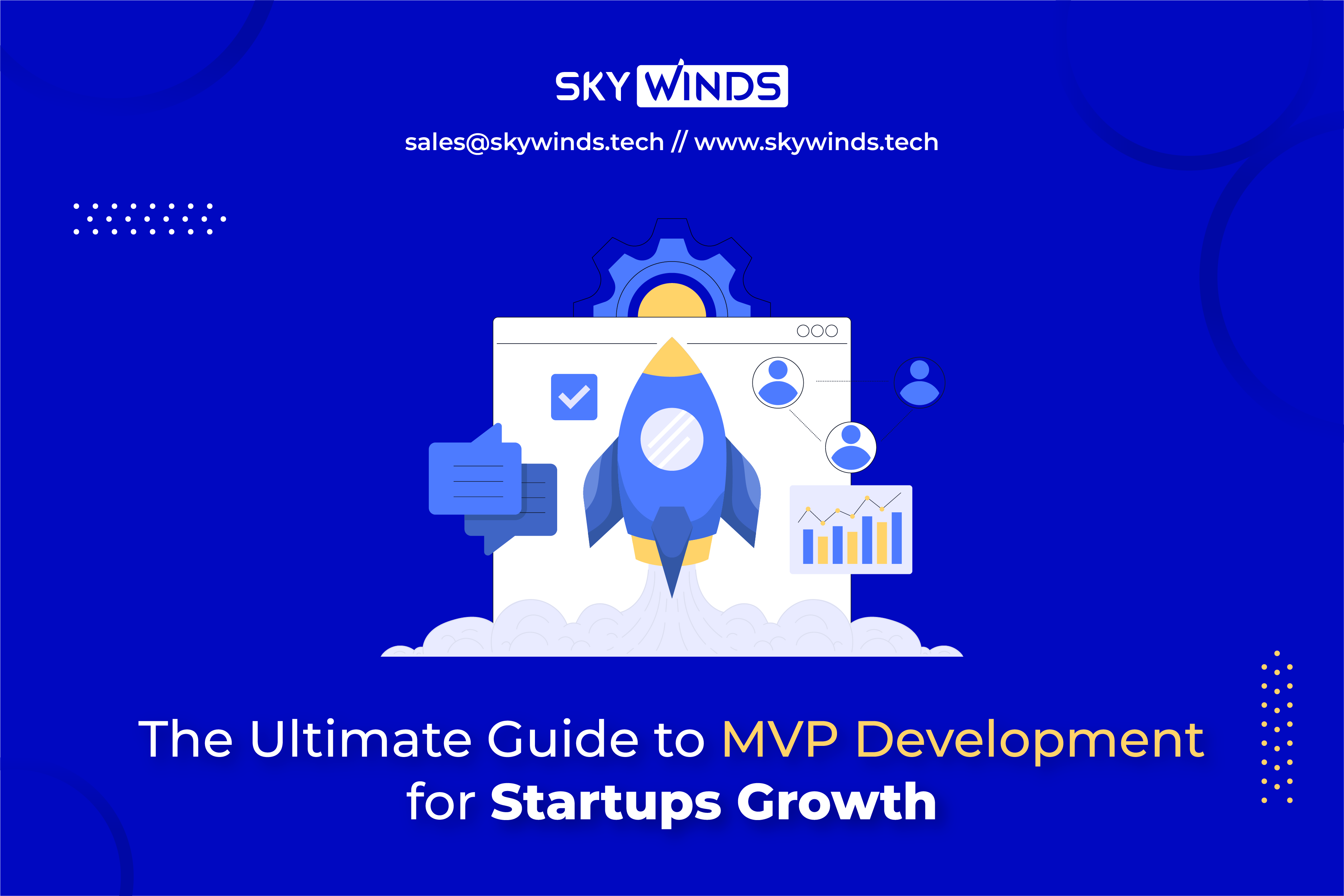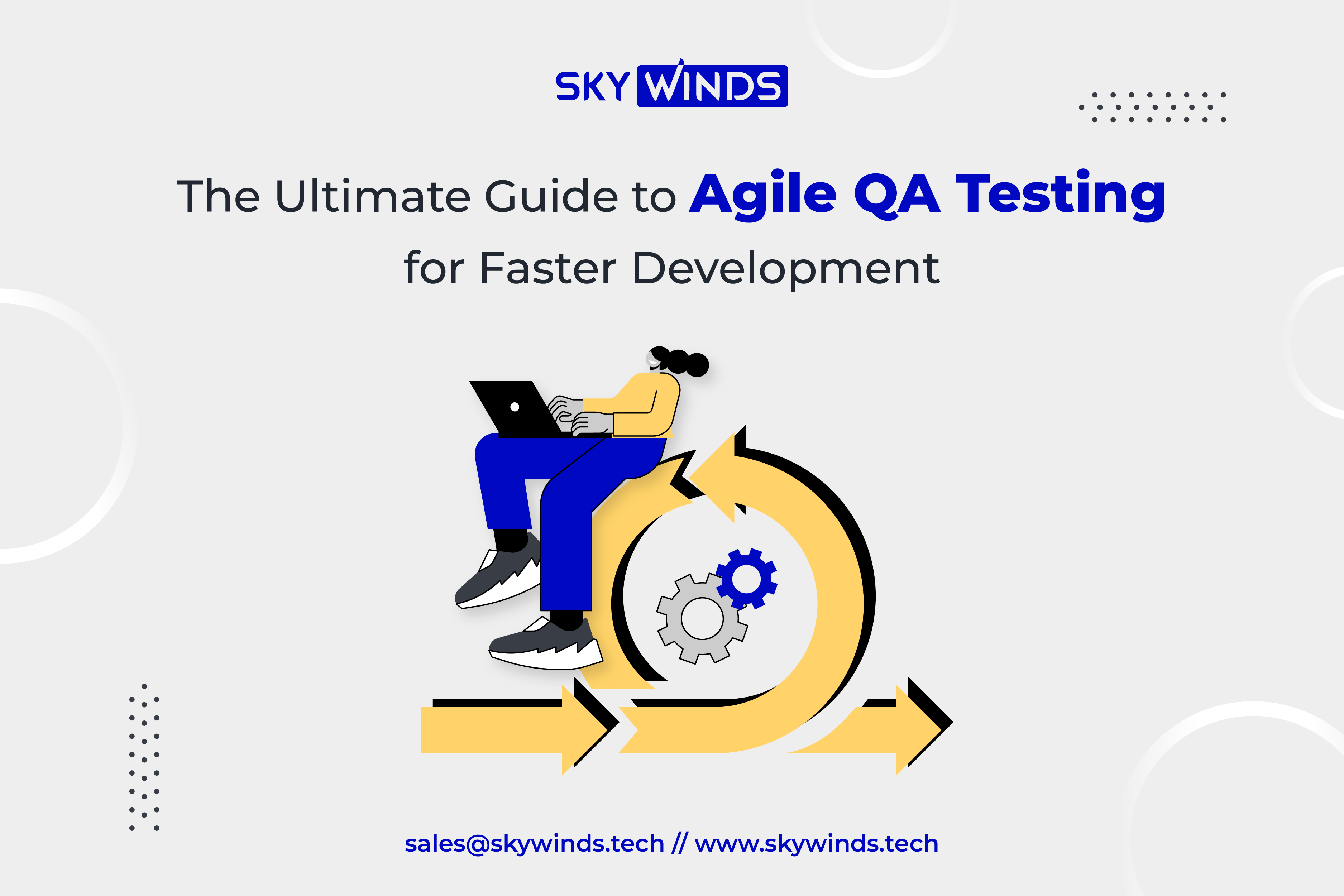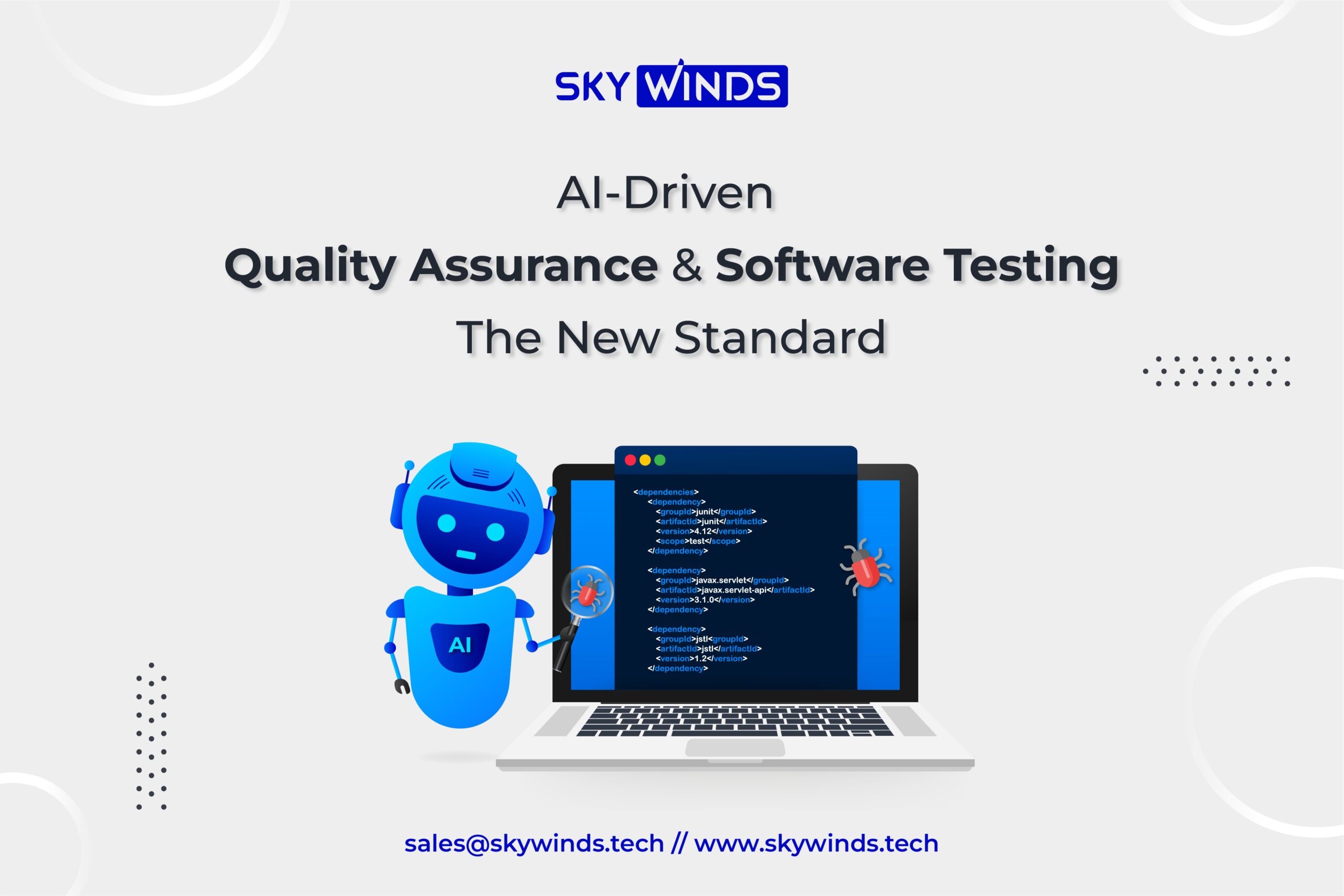
The process of quality assurance & software testing is crucial to the success of any software project. It is the last step before making software available to the general public. The finished product must function properly and be free of bugs for users. Testing the traditional way can be very difficult. QA manual testing service can be time-consuming, and it’s simple to overlook those annoying bugs that like to hide in the code. Making and maintaining test cases becomes more complex as software complexity increases.
The exponential increase in computing power over the past few years has led to the emergence of artificial intelligence (AI) in quality assurance (QA). This blog post will offer an in-depth discussion of this fascinating emerging study area.
Table of Contents
- The Role of Quality Assurance Software & Testing Services
- The Hype of AI in Quality Assurance & Software Testing Services
- How Can AI be Used in Quality Assurance & Software Testing?
- Stages of AI in Quality Assurance & Software Testing
- Challenges AI faces in Quality Assurance & Software Testing and how to overcome them.
- Conclusion
The Role of Quality Assurance Software & Testing Services
When it comes to making sure that finished software is risk-free and secure, quality assurance & software testing is a must. The importance of QA is hard to overstate. What a nightmare it would be to have to use buggy software.
Once upon a time, manual QA testing service was considered sufficient for quality control. Professional testers ran test cases to ensure the software was perfect. However, as software complexity grew, the limitations of manual QA testing services became more apparent.
Extreme manual labor is required, and mistakes made by humans are inevitable. Testers had to make new and update old test cases with each release or feature addition. Because of this, progress has slowed. The entire development cycle can be dragged out due to the time and effort required for manual application testing services.
It is because of such limitations in the testing environment that the introduction of Artificial Intelligence to QA testing services is seen as a life-changing solution. Automating repetitive tasks, Improving human efficiency, and Increasing testing efficiency are all by-products of the so-called impact of Artificial Intelligence in QA.
The Hype of AI in Quality Assurance & Software Testing Services
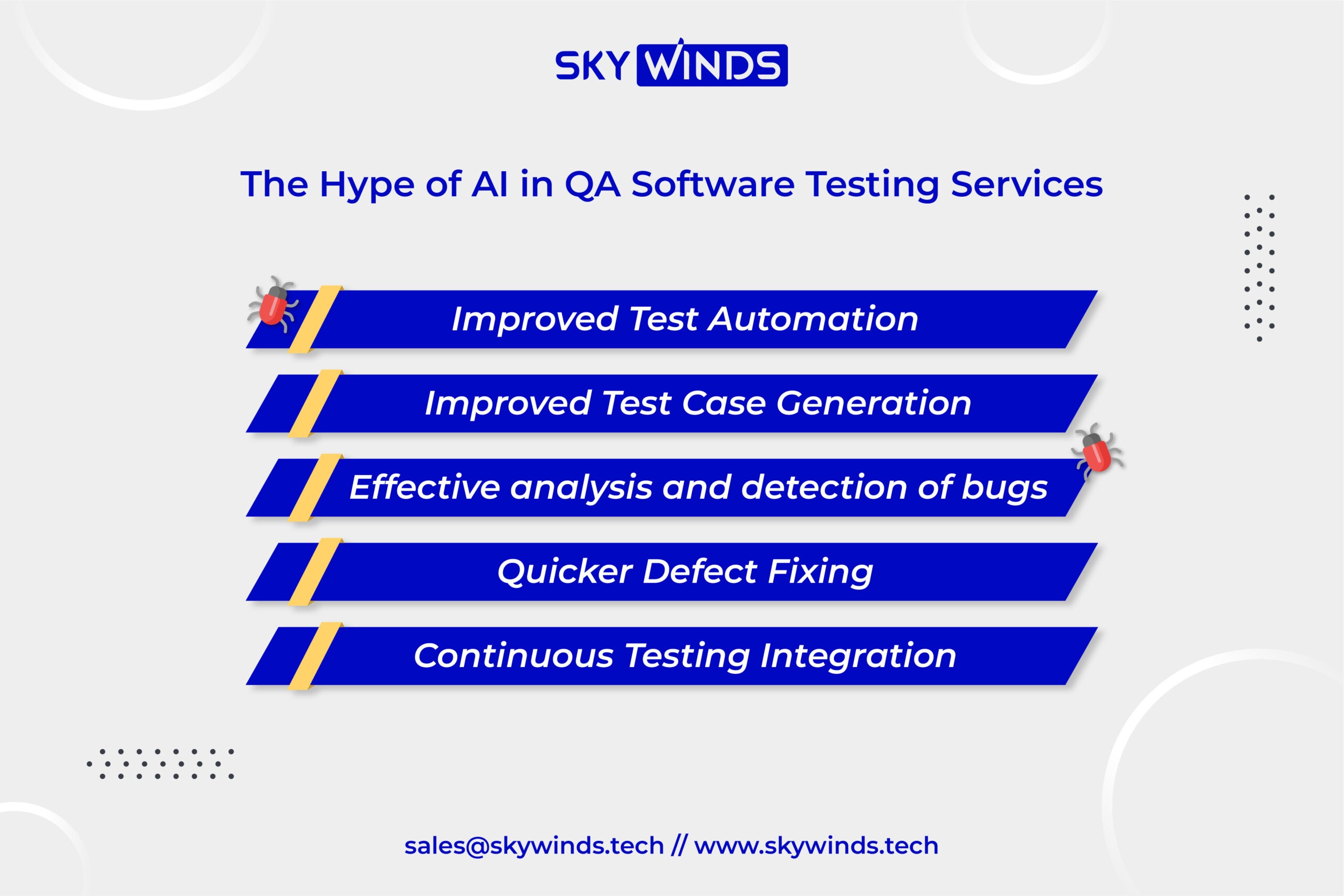
Significant advances in artificial intelligence (AI) are changing the face of quality assurance(QA) and software application testing services companies in general. Using AI for quality assurance services has many advantages:
Improved Test Automation:
The Holy Grail of Automating Time-Consuming Test Cases is AI-Enhanced Testing Tools. Now, AI takes control and runs tests on its own, learning from its mistakes as it goes.
Improved Test Case Generation:
No More Manual Creating of Tests! AI has the processing power to decipher software requirements and create customized test cases.
Effective analysis and detection of bugs:
AI is particularly good at this. By analyzing historical data, machine learning algorithms can pinpoint the most crucial areas to test.
Quicker Defect Fixing:
By inspecting errors and modifications to code, AI aids developers in playing the role of detective. You won’t have to spend hours trying to troubleshoot problems anymore because AI has your back.
Continuous Testing Integration:
AI has joined the CI/CD team, allowing for more dependable software updates. Using AI-driven automated testing, you can rest easy knowing that your most recent code changes won’t cause any problems in the wild.
How Can AI be Used in Quality Assurance & Software Testing?
Intelligent test selection
Intelligently determining the most relevant tests and eliminating redundant ones that add noise to the testing process is made possible by artificial intelligence (AI) tools.
AI optimizes application testing services to maximize efficiency by automating data collection and analysis and analyzing test results. Deep Exploit and other AI-based tools streamline the testing procedure by handling mundane but necessary tasks like
- Intelligence gathering
- Threat Modeling
- Exploitation
- Reporting
Machine Learning for Testing:
ML has the potential to improve significantly application testing services company by automating a wide range of processes—from creating test cases to analyzing the effectiveness of previously run tests.
Codes, logs, test cases, and documents are part of the organization’s dataset for training ML models.
These models can perform testing tasks efficiently once they have been trained, but their accuracy needs to be monitored and improved regularly by incorporating new data.
Computer vision bots
Computer vision bots can detect changes in labeled coding elements, such as login boxes or shopping carts, regardless of whether or not the underlying code is modified.
With this capability, the bots can effectively maintain tests, ensuring they are as resilient and flexible as possible despite changes to the underlying code.
Stages of AI in Quality Assurance & Software Testing
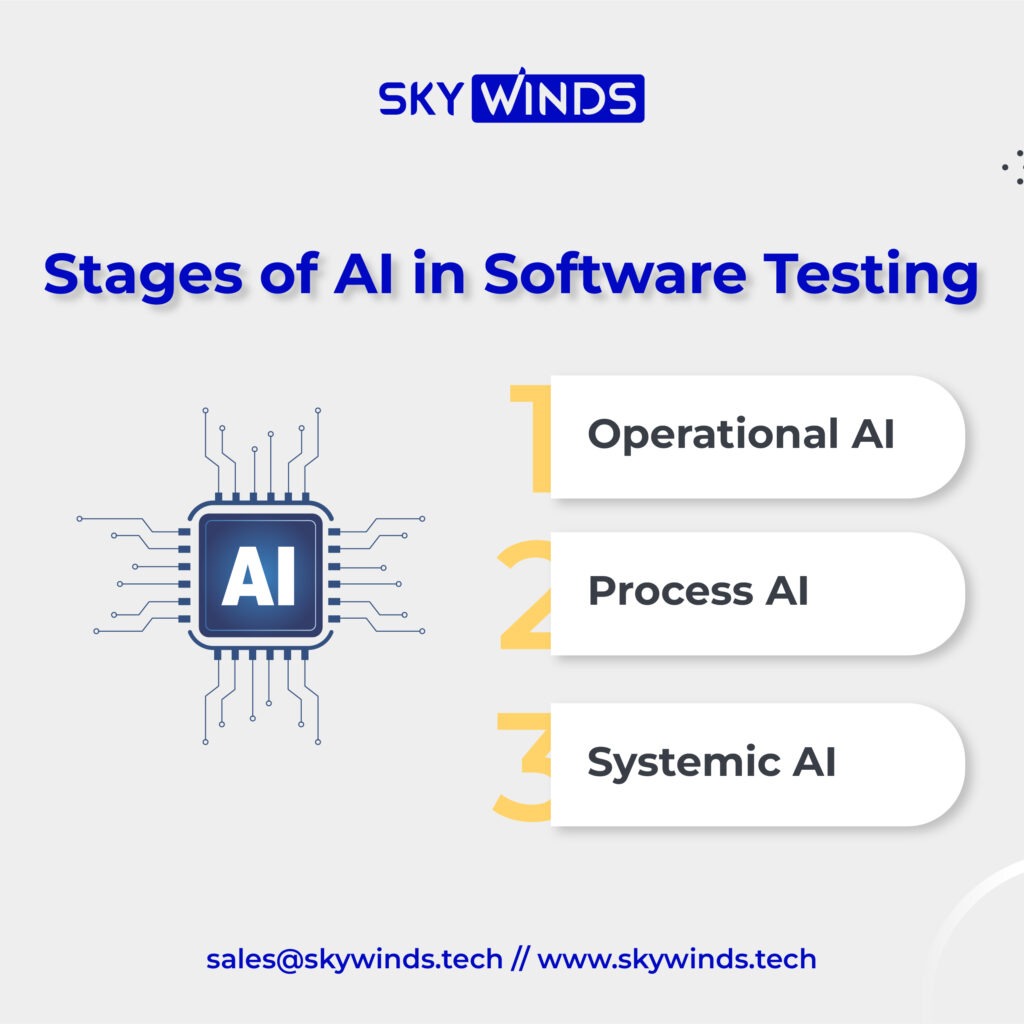
Operational AI
- The current phase of AI-enabled software testing, known as operational AI, entails the creation of simple scripts, their iterative execution, and storing the results.
- In software testing, operational AI entails writing scripts to simulate human testers’ mundane actions.
- Helps decrease the time it takes to write scripts, run them repeatedly, and save the results.
Process AI
- With the help of AI, software testing procedures can now carry out activities like test generation and coverage analysis.
- Guides how to conduct root-cause analysis, estimate testing efforts, and enhance the testing environment.
- Pattern recognition and usage analysis facilitate the generation of synthetic data.
- Makes a case for targeted unit testing instead of a full retest to save money.
- Provides more resources to boost software development efficiency.
Systemic AI
- Systemic AI is the testing of fully independent AI. It is currently impossible due to training and human-centric validation difficulties.
- Training and validating autonomous AI is time-consuming and costly because of the uncertainty of its intended use.
- The need for human intervention to validate the AI’s assumptions and findings is one of the significant drawbacks of fully-independent AI testing.
- To maximize software’s quality and development outcomes, it is essential to strike a balance between AI’s capabilities and human intervention’s verifiability.
Challenges AI faces in Quality Assurance & Software Testing and how to overcome them.
Despite the revolutionary potential of AI in the Quality Assurance & Software Testing industry, there are still obstacles in quality assurance (QA) and software development.
1. Error in Generalization
Search-based software testing makes heavy use of AI algorithms; however, these are usually only applicable to a subset of problems.
Their results from one set of tests may not apply to another.
Recommendations
We advise programmers to value adaptability highly when creating AI models. Transfer learning is advantageous for artificial intelligence models because it enables them to transfer their knowledge from one domain to another.
2. The requirement for massive amounts of data.
One of the biggest obstacles in training AI models is the need for more readily available high-quality data. Artificial intelligence models may be inaccurate or biased without a large and diverse dataset, leading to unreliable test results.
Recommendations
To supplement existing datasets, we advise developers to look into this issue to investigate methods for generating artificial data. These techniques allow AI models to learn from wholly fabricated data, significantly reducing their data requirements upfront.
3. Expensive to Compute
Putting machine learning and deep learning models into practice can be computationally expensive because of the amount of data and processing time needed. Between 2012 and 2018, the computing power needed to develop a sizable AI model doubled every 3.5 months.
Recommendations
Tensor Processing Units (TPUs) and Graphics Processing Units (GPUs) are cutting-edge hardware that can help businesses reduce their computational expenditures.
4. Fairness and prejudice
The testing data may reveal an AI model has acquired biases from its training data. In addition, if there is more variety in the data, it could paint an accurate picture of specific demographics or use cases.
Recommendations
A developer’s top concern should be the caliber and variety of data used to train AI models. Techniques like adversarial testing and routinely assessing the models for fairness and bias can help find and correct bias problems.
Conclusion
There is no denying the revolutionary effect that AI has had on Quality Assurance & Software Testing services, which has led to improvements in time-to-market, software quality, and development team productivity. It has elevated the position of quality assurance professionals by freeing them from mundane tasks so they can concentrate on more strategic testing.
Those willing to adapt to this new reality will be at the forefront of providing the world’s most innovative software solutions. Outsourced QA testing can make things easy by finding the best quality assurance companies. So, let’s jump on the AI bandwagon and welcome the novel opportunities it presents in software evaluation.

